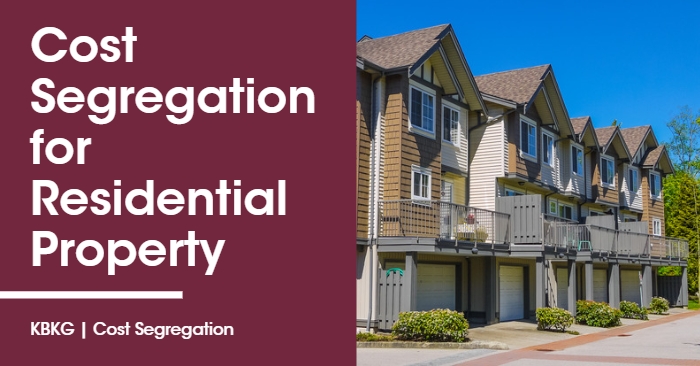Cost Segregation for Residential Property
A cost segregation real estate analysis is a tax planning method used by companies and individuals who have remodeled, constructed, or purchased any type of real estate. This method allows them to accelerate depreciation deductions, which in turn defers federal and state income taxes and increases cash flow.
If you are the owner of a residential property, however, you may be wondering if a cost segregation analysis for real estate can help you save money and improve cash flow. The answer is “yes” in many cases. Taking advantage of a cost segregation study may help you reduce operating costs and lower taxes over time.
Benefits of Cost Segregation Real Estate Studies
Real estate cost segregation may seem complicated, but there are many practical benefits for residential property owners. If you own residential real estate, a cost segregation study can benefit you in the following ways:
- Reduced tax liability – By categorizing the components of your home or rental property, you can accelerate depreciation on specific components. This means you will pay less in taxes.
- Improved cash flow – Using accelerated depreciation, you can claim better deductions in your property’s earliest years, allowing you to increase cash flow. Having more cash on hand can be especially advantageous during the first year when things are usually financially tight and you may have to deal with unexpected expenses.
- Improved efficiency – By identifying and classifying all the separate components of your property, a study can help you manage and maintain the property more efficiently and effectively. This can low operating costs in the long run.
The Length of Time for a Cost Segregation Study
How long it takes a tax professional or CPA to complete a cost segregation study depends on a number of variables, such as the complexity of a property. In general, a typical study can take several weeks or months. Some of the most influential factors that impact the length of time it takes to perform cost segregation for residential real estate include:
- Availability of information – A cost segregation can be performed faster if detailed information about a home’s components is already on record. The more time a tax professional or CPA has to spend obtaining this information, the longer the study will take.
- Documentation quality – Even if documents regarding the components of a property are readily available, it can take longer if these documents lack complete or important details.
- Property size – Naturally, larger properties will have more components than smaller properties.
Documents Needed To Perform a Cost Segregation Study
The type of documents needed for a cost segregation study for real estate will depend on the property you own and whether you have constructed a new residence or purchased or remodeled an existing one. A cost segregation specialist may need you to obtain documents such as property tax records, construction and improvement records, maintenance records, utility bills, appraisal reports, and property maps. These documents can help a specialist perform an accurate and in-depth analysis.
KBKG Specializes in Cost Segregation Real Estate Studies
If you are the owner of a residential property seeking a company that specializes in cost segregation for real estate, KBKG is here to help. Our team of tax professionals can help you conduct an extensive and accurate study that reduces your tax burden and increases your cash flow. Learn more about our company and how it approaches cost segregation for residential real estate.


